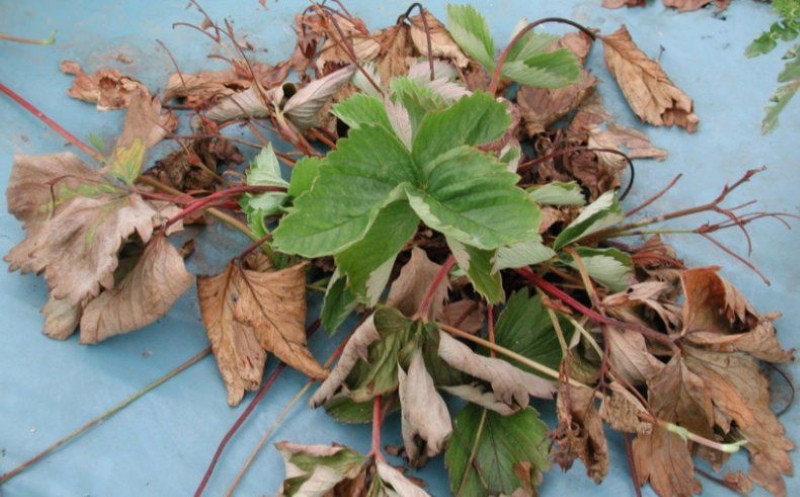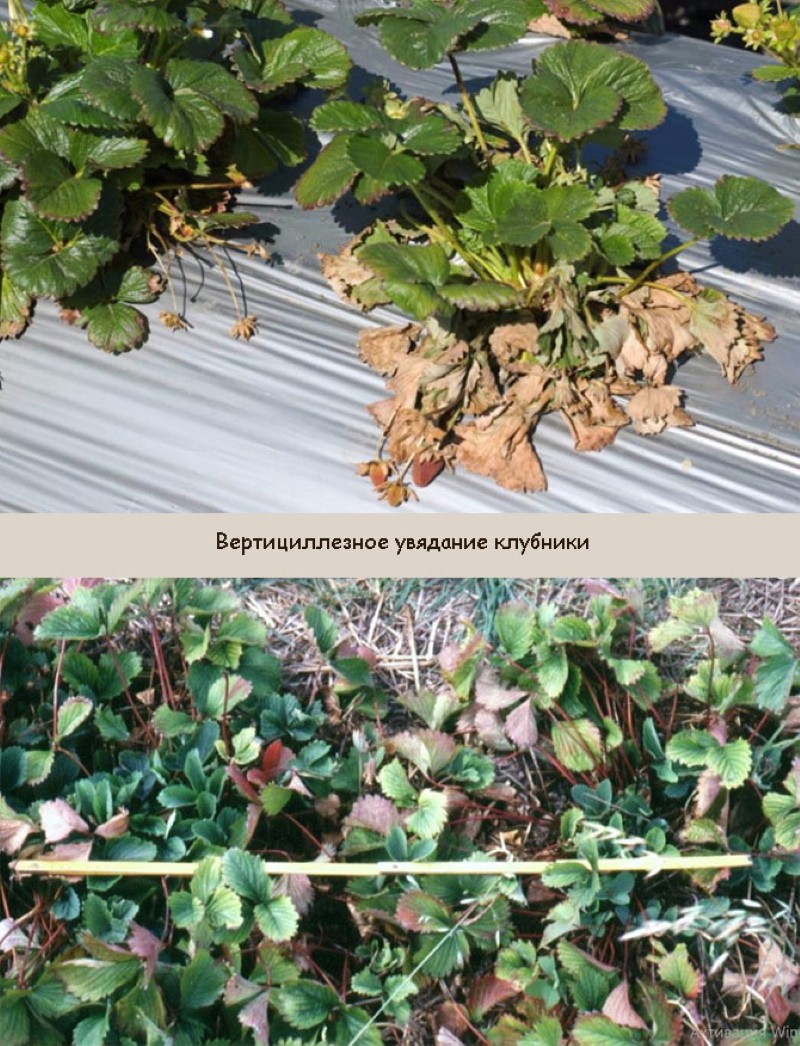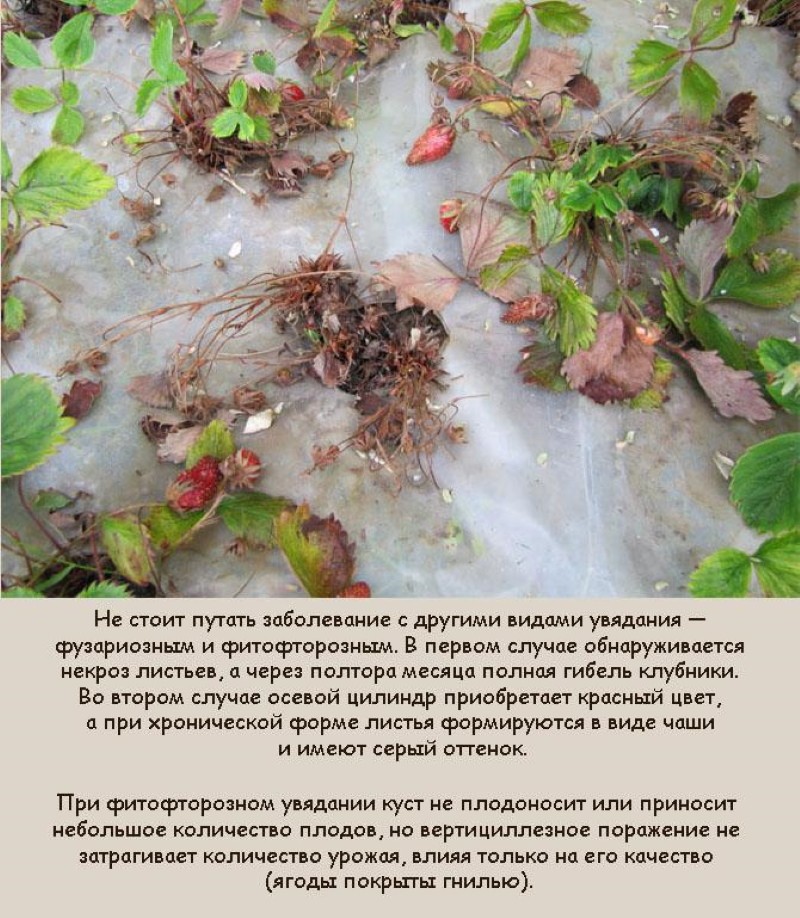How to detect and treat strawberry verticillary wilt - one of the most dangerous crop diseases
 Every gardener is periodically faced with various diseases of strawberries and other berries. Wet weather, cold summers, fungi and viruses - there can be many reasons and it is very difficult to insure against all of them. But the most dangerous and complex disease is strawberry verticillary wilting. Moreover, it is dangerous not only by the affected area, which can go much further, beyond the borders of the berry. First of all, the fungus is dangerous because it is impossible to notice it at the initial stage, which means that it is impossible to react in a timely manner. Only when the disease affects the aerial part, it becomes clear that the culture is sick. But it is also difficult to determine what exactly, because there are similar signs in Fusarium.
Every gardener is periodically faced with various diseases of strawberries and other berries. Wet weather, cold summers, fungi and viruses - there can be many reasons and it is very difficult to insure against all of them. But the most dangerous and complex disease is strawberry verticillary wilting. Moreover, it is dangerous not only by the affected area, which can go much further, beyond the borders of the berry. First of all, the fungus is dangerous because it is impossible to notice it at the initial stage, which means that it is impossible to react in a timely manner. Only when the disease affects the aerial part, it becomes clear that the culture is sick. But it is also difficult to determine what exactly, because there are similar signs in Fusarium.
Strawberry verticillary wilting - signs of disease

At the initial stage, when the fungi just penetrate the roots, and it would still be possible to save the strawberries, it is impossible to detect the problem. External signs appear closer to the harvest season:
- lower, old, leaves, wither, turn brown and dry out;
- fewer young leaves appear, they are small, twisted;
- whiskers and petioles may be covered with dark (or bluish tint) spots;
- petioles turn red;
- young roots turn black and slow down in development;
- old roots are destroyed, become loose;
- Plants droop, become small (dwarfism), foliage is also small and yellowish.
How and how to treat strawberries from a dangerous fungus
 At a stage that is already visible to the naked eye, it is no longer possible to save the culture from the fungus. And earlier, as you remember, it is also impossible to notice the disease.
At a stage that is already visible to the naked eye, it is no longer possible to save the culture from the fungus. And earlier, as you remember, it is also impossible to notice the disease.
The only correct solution is to dig up and destroy the affected bushes. Plus, be sure to treat the soil after them with fungicides, because the fungus remains in it.
Biologicals can be used against wilting Trichodermin, Fitosporin. With them, you can treat the plants themselves before flowering or for the purpose of prevention. From the "serious weapon" soil and strawberries are treated with Maxim or Bordeaux mixture in early spring or autumn.
To prevent verticillary wilting, plant only varieties that are resistant to this disease. For example, strawberries Vima Zanta, Lambada, Figaro, Mize Schindler and Tsarskoselskaya.
To prevent fungal disease, remember to replant strawberries every 4 years. Avoid waterlogged areas, and also do not plant berries after tomatoes, melons, peppers, potatoes.